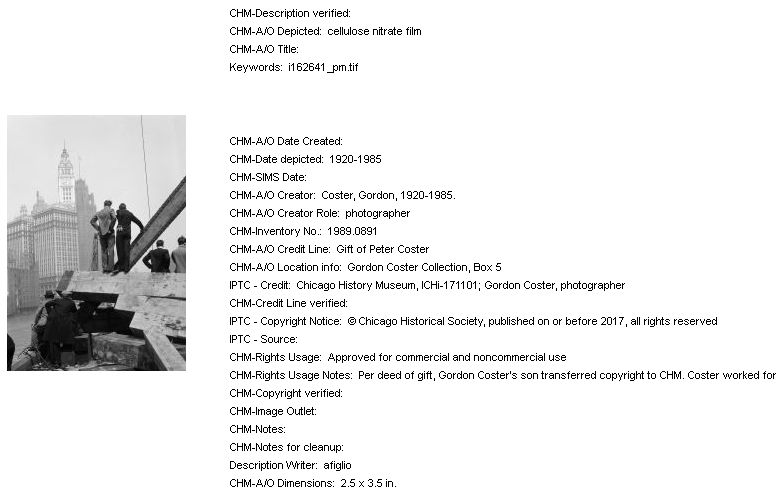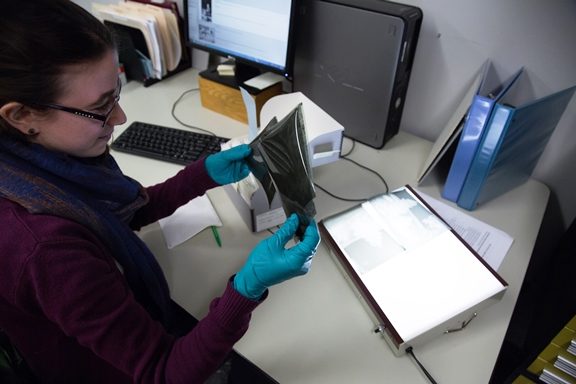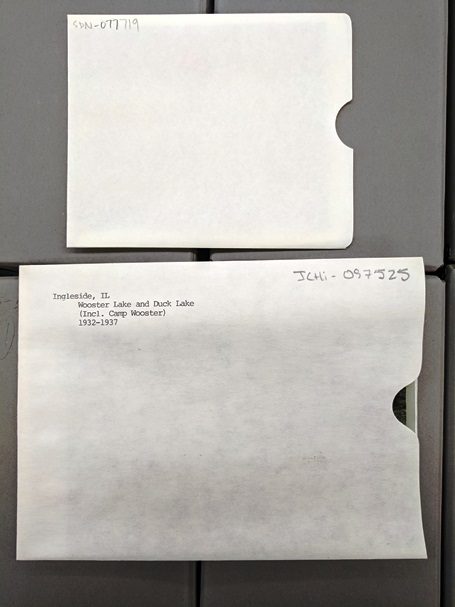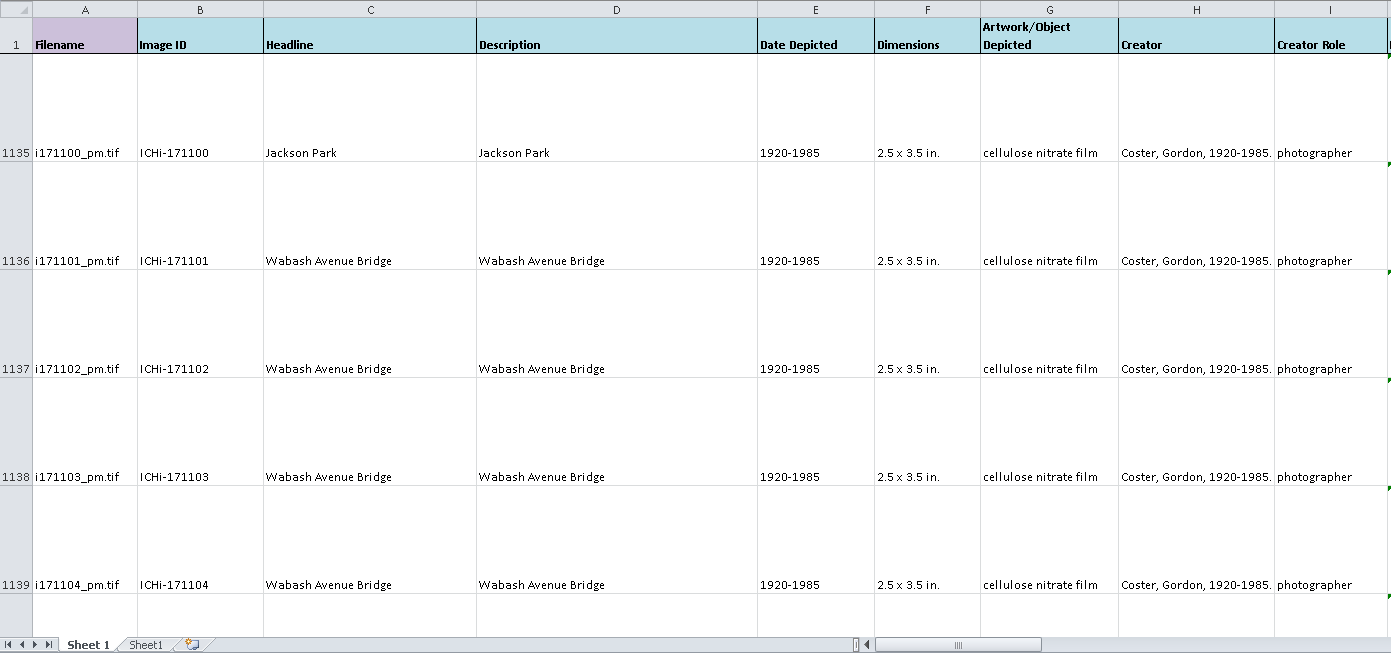As part of our Monday Night Nitrates series, the Chicago History Museum collections staff is blogging about the process of digitizing approximately 35,000 nitrate negatives. In this post, CHM rights and reproductions manager Angela Hoover writes about the painstaking task of transferring and recording metadata.
In September 2016, the Chicago History Museum received a grant from the Institute of Museum and Library Services to digitize approximately 35,000 nitrate negatives, make the images publicly accessible, and transfer the negatives to freezer storage. This year-and-half-long project commenced the following month, and the collections department has been working diligently on it since then. The negatives passed through several hands on their journey to the freezer, and their first stop was the rights and reproductions unit where staff and interns assigned unique image identifiers (image IDs) to each negative and created image metadata.
Metadata is commonly defined as “data about data,” or in our case, information we record about and attach to an image. It helps us quickly find what we’re looking for by keyword. The metadata we created for this project is similar to what you might find in a card catalog—image description, date depicted, photographer, collection title, etc.—as well as copyright information and technical metadata such as digital file format and resolution. Creating metadata for an image can be more time consuming than digitizing the object, yet it’s a vital step to ensure that the image remains identifiable and discoverable.

An example of metadata on the back end for a newly digitized negative. All images by CHM staff
Our first task was to assign image IDs to each negative and write those image IDs on the negative enclosures. We had to ensure that numbers weren’t skipped or repeated, as later the photographer used these image IDs to name the digital files. To complicate matters, single negative enclosures sometimes contained multiple negatives, so we had to pull negatives out of their enclosures and count them in order to assign the correct number of image IDs. At the same time, we assessed the negative’s condition—those in poor shape and unable to be digitized were sent to the conservator for further assessment and conservation work.

CHM intern Abby Klionsky assesses and counts nitrate negatives.
Next, we entered image metadata into an Excel spreadsheet. Typically, descriptive information (subjects, locations, and dates) was found on the negative enclosures, labeled by the original photographer or CHM staff member or intern who processed the collection; occasionally, we found that the photographer had written this information on the negative itself.

The amount of descriptive information on each negative enclosure varied—while some sleeves contained detailed descriptions, others had no information at all.
These details were entered in the appropriate descriptive metadata columns in the spreadsheet. For negative enclosures with no descriptive information, we relied on the existing collection catalog record to generate a generic collection description. Additional metadata that referred to the collection (collection title, accession number, photographer, etc.) was copied and pasted from the existing catalog record and added in the appropriate columns.

The metadata spreadsheet for the Gordon Coster collection.
Once the negatives were digitized, we uploaded the images and the metadata spreadsheet to our digital asset management system. Using the image filenames as keys, the system populated its metadata fields with the information from the spreadsheet’s matching image ID rows.
By the end of 2017, digitization of the negatives will be complete. The majority of the images can be viewed now in our Collections Online portal, and the entirety of the nitrate collection will be available by May 2018. Stay tuned for future posts about this project on topics such as digitization, conservation, and cataloging and access.